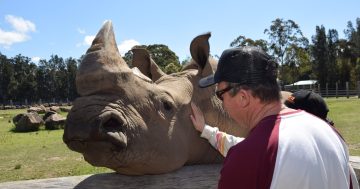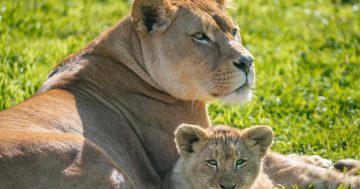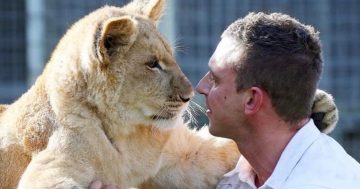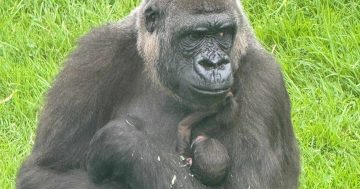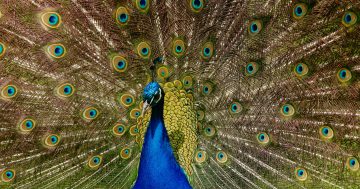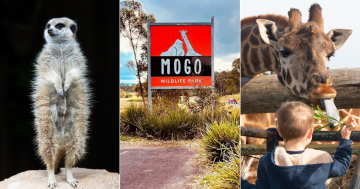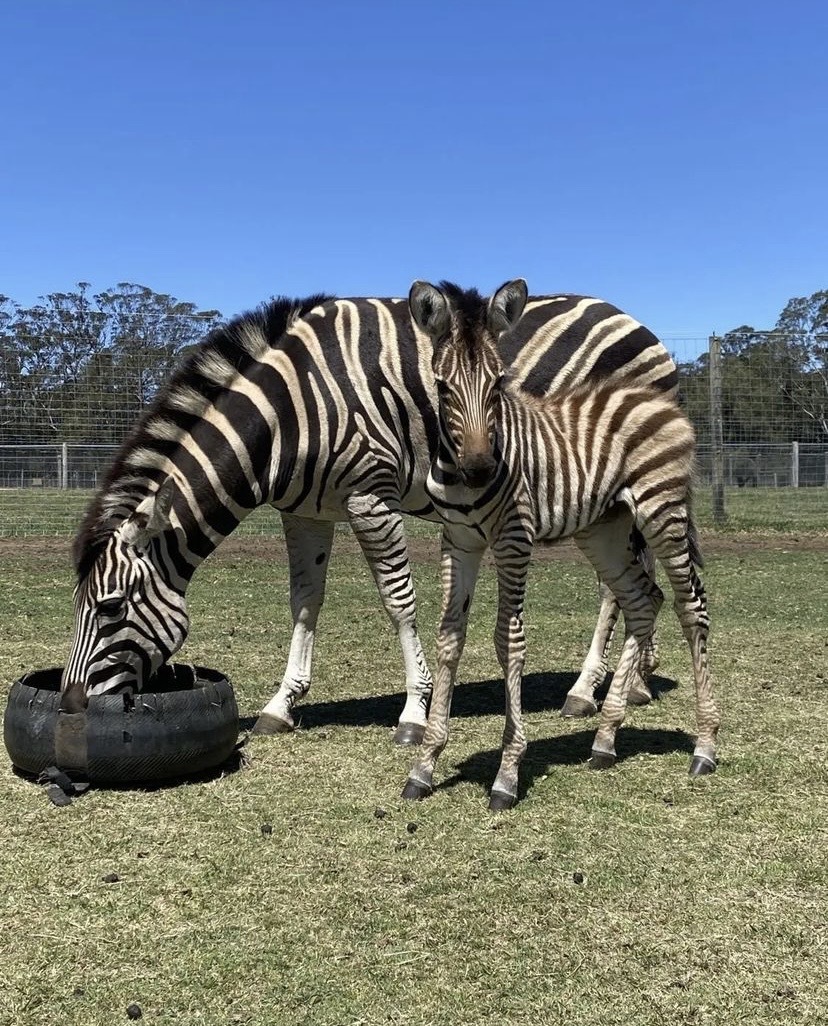
His skinny legs aren’t stopping Mogo’s newest (zebra) resident, Subira, from putting on a show. Photo: Mogo Wildlife Park/Instagram.
Meet Subira!
Zookeepers on the state’s Far South Coast have been looking after their youngest charge since his recent birth.
Australian Wildlife Parks managing director Chad Staples said the newest member of Mogo’s zebra herd was ”doing really well”.
“Thankfully, no intervention was needed and mum’s doing great – it was a perfect birth,” Mr Staples said.
Subira was born to parents Katali and Melako in late October.
Like many zebra births, this one took place overnight.
“They use night as cover, to be as secretive as they can, because in the wild childbirth is the most dangerous time for mum and baby,” Mr Staples said.
“As zookeepers, we just get this wonderful surprise in the morning.”
Even though Subira’s name means ”patience” in Swahili, he is already running around and exploring.
“Like all zebras, he’s running around faster than you can imagine,” Mr Staples said.
“He’s already walking, suckling and prancing around in play, which is just wonderful.”
Subira immediately went on display alongside the rest of the herd.
“The lucky visitors that turned up that first day were greeted with a brand-new baby zebra!” Mr Staples said.
While people may not picture zebras when they think of Australia (or the Far South Coast), Subira is just one of several animals that come from faraway places and now call the region home.
“The collection of animals at Mogo is principally an exotic collection, so they’re animals from all over the world,” Mr Staples said.
“Most of them have had some sort of significant conservation status, and we’re involved in the breeding programs of several animals.”
Subira joins the other African animals at Mogo Wildlife Park, meaning visitors can learn about the animals and conservation efforts.
“There’s certainly a lot of kids and adults on the South Coast that may never get an opportunity to visit Africa,” Mr Staples said.
“We loved the idea of being able to bring Africa to them in a little way.
“It allows people to experience a little taste of what it would be like in Africa without having to travel.”
Mr Staples said the zebras were in one of the programs helping to bring genetic diversity to the animals’ wider population.
“We’ve had an established zebra herd at Mogo for quite some time, but he [Melako, Subira’s father] is a relatively new stallion to the group,” he said.
“One of the important things with managing captive populations is genetics.
“You’ve got to ensure that you’re maintaining that strong genetic diversity over generations – it’s quite often that stallions are moved from zoo to zoo.”
Despite the preparation before its arrival, Mr Staples said welcoming a baby animal was a heartwarming prospect, just as it was with human offspring.
“Obviously, babies are just one of those joyous occasions,” he said.
“It’s a combination of a lot of work and planning – it takes a lot of time and planning to bring these things to fruition.
“To see a baby born and mum doing well is a huge joy.”
But if you aren’t able (or lucky enough) to make it to Mogo Wildlife Park, there is another way to get your animal fix.
Australian Wildlife Parks, which owns the zoo alongside several other locations, has released its anticipated 2024 Wildlife Calendar.
The calendar features photographs from amateur photographers from across NSW in the care of zookeepers across Australian Wildlife Parks’s locations.
CEO of Australian Wildlife Parks Tony Chiefari said the calendar brought more than pretty pictures to every who viewed it, including to the thousands of primary school students who are set to receive one.
“Not only can we showcase animals from all three of our iconic wildlife parks, but we can also provide an invaluable wildlife education opportunity to 110,000 students across NSW, especially in our regional catchments of the South Coast, Central Coast, and the Hunter Valley,” he said.
Mogo Wildlife Park is at 222 Tomakin Road and is open from 9 am to 4 pm. More information can be found on their website.







